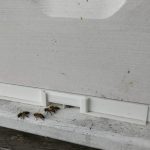When most folks hear the words honey blankets, they may picture some sort of magical snack from a farmers’ market or a cute name for a comforter. But when it comes to beekeeping, honey blankets are an actuality—and they’re not merely adorably named, but also surprisingly effective. These warm additions to hives are slowly becoming a beekeeper’s top secret for maintaining colonies contented, toasty, and productive.
Although bees are notoriously independent, they do require a little assistance with surviving cold weather. That’s where blankets for beekeeping come in. Imagine them as the hive’s version of an extra-thick woolen sweater on a freezing morning. They’re easy, but what a difference they make to temperatures.
Table of Contents:
Why Bees Appreciate These Toasty Helpers
A healthy colony can withstand cold weather on its own, sure. But excessive heat loss during the winter can stress bees out—literally. The colder it is, the more fuel bees need to consume to keep warm, and this depletes their valuable honey supplies quicker than you can say “buzz.” With honey blankets, that problem mellows out. These insulated layers placed over the hive or frames trap just enough warmth to ease the strain on the colony. Bees still cluster, still hum, but now they do it with less pressure.

What’s beautiful is that these blankets aren’t just about warmth—they’re also about moisture control. Winter in the hive can get a little sweaty (gross but true). Without something to absorb that excess condensation, things get damp and dangerous fast. These blankets serve to wick away that moisture, keeping mold off and the hive warm and dry.
How Honey Blankets Fit the Natural Flow
Beekeepers who use these blankets for beekeeping generally find their colonies exit winter healthier, less ravaged, and with fewer losses. And no, it’s not one of those sensational high-tech devices. It’s generally a simple matter of absorbent material—such as wool, burlap, or even used quilted fabric—drawn in neatly over the top bars or beneath the inner cover.
It’s a subtle means of providing bees with a fighting chance on uncertain weather days, without interrupting their natural cycle. That’s the magic of this basic tool: it doesn’t augment the bees’ work; it just assists them quietly overhead.
Using These Blankets Isn’t Just a Trend
There’s a reason longtime beekeepers are smiling more these days. They’ve discovered that honey blankets reduce the need for emergency feeding, late-winter inspections, and that sinking feeling when spring reveals a dead-out hive. Of course, no single method is a silver bullet in beekeeping, but this one feels like a warm hug—one that’s earned its place in the smoker-scented toolkit of experienced and novice bees alike.
The buzz surrounding such blankets is growing no trick. It’s based on old-fashioned observation, testing-and-fail, and the very human impulse to do good by these tiny extraordinary creatures.
Final Thought on Blankets and Bees
There’s a kind of quiet joy in placing honey blankets on a hive just before the frost rolls in. It’s a gesture that says, “I’ve got your back,” from beekeeper to bee. And while the bees won’t thank you out loud, come spring, their hum will say it all.
Posts from the same category:
- Special Requirements and Steps for Buying Slovenian Real Estate for Foreigners
- Potted Yucca Plants – How To Care For A Yucca Houseplant
- Types of Pallet Truck
- Top Qualities to Look for in an External Door
- Full Service Lawn Care Company
- Why Do You Need Automated Watering Systems?
- Importance of Kitchen Chairs









